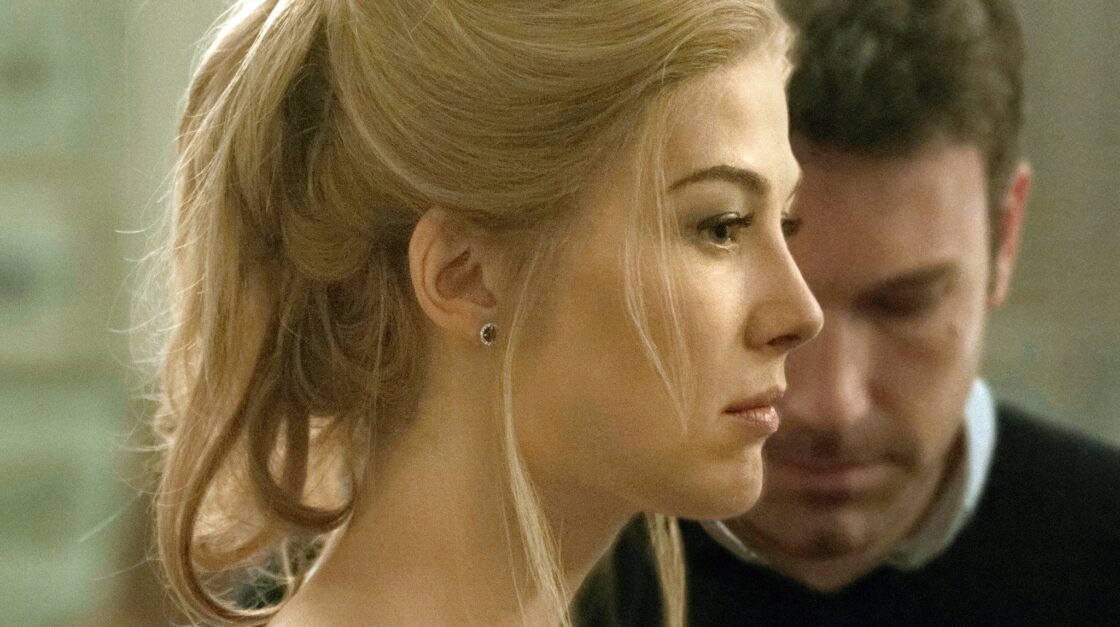For most of my fiction-writing life, I’ve written about complicated women. Women who lie, deflect, self-sabotage. Women who want too much or want the wrong things. Women who are soft in one scene and sharp-edged in the next. And throughout that life, I’ve also received more feedback than I can count on the subject of likeability. I’ve heard things like: “She’s kind of hard to root for.” “Will readers be turned off by how abrasive she is?” “I just didn’t connect with her.” These comments weren’t always framed as problems, but there was often a suggestion lurking beneath them: maybe the character should be more palatable. Soften her up, and make her more likeable.
What struck me early on was that these comments almost exclusively showed up in relation to my female characters. It’s not that readers never comment on the likeability of men—but far less frequently, and often in a very different tone. A male character who is cold, brooding, angry, or morally compromised is often described as fascinating, layered, or mysterious. Meanwhile, a woman who behaves in a similarly messy, flawed way? She risks being called annoying, unrelatable, or “not someone I’d want to be friends with.”
I used to take this feedback to heart. In one early manuscript, I gave a character a nervous speech pattern—something specific she did when she felt overwhelmed or uncertain, which, for her, was often. It was a core part of her voice. I received comments from early readers who found the repetition irritating, even “unbearable.” So, I cut it. Completely.
You know what happened? She disappeared. Without that nervous tic, her voice and presence on the page faded like wallpaper. What made her distinctive became invisible. The answer wasn’t to eliminate the trait entirely; it was to refine it. I later went back and reinstated that nervous speech pattern, but with intention. I used it sparingly, strategically, and in the end, she became a more dimensional character, not less. The nervous repetition didn’t make her less likeable—it made her feel real.
My understanding of likeability in fiction shifted in a big way while working on my second novel. That book featured two female leads, both of whom were intentionally unlikeable—but in very different ways. One was harsh and defensive, her emotions guarded beneath biting sarcasm. The other was self-righteous, withholding, and occasionally cruel. I adored writing them, but was worried readers would hate them both. I took the manuscript to a novel-writing retreat, where it was read and critiqued by a National Book Award finalist. Her response? “Your depiction of female characters is sterling. I don’t want to hangout with either of these girls, but I can’t stop reading them, and don’t want to.” I’ve never forgotten that. It was a turning point for me—not just in how I saw those characters, but in how I understood my job as a writer.
The goal isn’t to create people readers want to be friends with. It’s to create people readers can’t look away from. Sometimes that might mean they’re endearing, but it might also mean they’re abrasive and unhinged. Or stubborn, manipulative, wounded, avoidant, etc. Readers don’t need characters to be nice; they need them to be compelling.
So much of the pressure around likeability has little to do with craft and more to do with culture. “Likeable” is often shorthand for agreeable, unthreatening, and easy to digest. This shows up most intensely around female and marginalized characters. We know this in real life. Assertive men are seen as confident, while assertive women are called aggressive. Why wouldn’t that double standard leak into fiction?
It’s not just about gender. There’s also a modern tendency to conflate a character’s viewpoint with the author’s. If a character behaves badly or holds a problematic belief, some readers assume the writer is endorsing that behavior. This is especially true if the character is from a marginalized identity group, or if the story lives in the space of literary realism instead of satire. However, our job as fiction writers isn’t to serve up moral role models. It’s to tell the truth about human behavior—to write characters with jagged edges, blind spots and morally questionable mindsets. In short, we should write people, not cookie cutter characters.
What I value far more than likeability in a character is depth. I want to feel something when I read. That’s why I read. A character that pulls anger, fascination, or frustration out of me are the ones I’ll remember. I don’t need to like a character—I need to be emotionally activated by them, to be drawn in by their voice or gripped by their conflict. Their characteristics should pique my interest and make me desperate to know what they’ll do next, even if I don’t agree with it. Heck, especially if I don’t agree with it!
While critiquing or editing novels, I sometimes come across writers who feel paralyzed by this pressure to make their characters likeable. They want the reader to root for their protagonist, to approve of their actions, and to connect easily. But when we write with that fear, we often sand down the very traits that make a character memorable. I’ll ask them: What would happen if none of your characters were likeable? Instead, what if they were layered? What if they contradicted themselves? What if they were, like most people, capable of both generosity and cruelty? Trying to make your characters universally likeable is the fiction-writing equivalent of being a people-pleaser. And just like in life, when we aim to please everyone, we usually end up saying nothing interesting at all.
So instead of asking, “Will readers like her?” try asking, “Will readers understand her?” “Will they feel something toward her?” “Will she make them uncomfortable in a way that matters?” When we stop worrying about whether a character is palatable—and start asking whether she’s complicated, layered, and alive on the page—we get closer to writing something real.
On the page and in life, likeability is fleeting. It’s authenticity that lasts.
Love Notes on My Favorite Unlikeable Characters
Now that we’ve dismantled the myth of the likeable character, I’d like to share some love notes to a few of the characters who pushed that myth off a cliff for me. These are the cold ones, the complicated ones—the characters who made me squirm, shout at the page, and made me think, “Wow, I kind of hated that person—and I couldn’t look away.” These aren’t characters I necessarily loved as “people,” but they are the characters I most remember as a reader and admire as a writer.
Let’s start with the ultimate villain: Cathy Ames from Steinbeck’s East of Eden. I consider her one of the most cruel, sociopathic, and nasty characters in all of literature—and I do not say that lightly. I despised Cathy. Truly! Her evil nature leapt off the page, and felt like a mental assault. She made my skin itchy and my brain ache, but that’s exactly why I still think about her more than twenty years after reading the book. There’s no redemption arc here, no tragic backstory to soften her edges. (Consider what she did to her parents! IYKYK!) She is pure manipulation and the definition of evil—and yet, undeniably unforgettable. Steinbeck doesn’t try to redeem her. He simply lets her be what she is: terrifying. That’s what makes her so powerful on the page. Cathy didn’t earn my sympathy; she earned my awe.
Then there’s Amy Dunne from Flynn’s Gone Girl, who is perhaps the most iconic “unlikeable woman” in modern fiction. Amy is brilliant, vindictive, and calculating. She’s the character you love to hate, but can’t stop listening to. I still think about her “Cool Girl” monologue fifteen years later. That speech lives rent-free in my mind. If you’re a woman who has dated—especially during your twenties or thirties—it’s impossible not to feel the sting of recognition. Amy says the quiet part out loud, and it’s electrifying on the page. Yet, as resonant as she is, there’s no denying she’s awful. Amy is not misunderstood or morally gray—she is awful. As a human being, she’s manipulative and chilling. But as a character? She’s a masterpiece. You find yourself disliking her and rooting for her, identifying with her and being horrified by her. That tension is what makes her so brilliant as a character.
In a completely different direction—but just as compelling—is the novel Bunny by Mona Awad. This book was one of the oddest, most “WTF did I just read” reading experiences I’ve had in the last five years. To be clear, that’s a high-level compliment. The protagonist, Samantha, is prickly, elitist, and often cruel in her internal monologue, especially toward other women in her Iowa-style MFA writing program. Her personality is not trying to win the reader over or make them like her. Instead, she drags you with her into a surreal, blood-soaked (So. Much. Blood.) fever dream of loneliness, identity, and female friendship gone haywire. You may not like Samantha, but you will feel her, and you definitely won’t ignore her. If you’re up for a wild reading ride, Bunny will take you on an unexpected reading rollercoaster. Be sure to hang on!
Finally, there’s Richard Papen from Donna Tartt’s The Secret History. Unlike the others, Richard is more emotionally muted, more reserved in his cruelty, but that’s part of what makes him so quietly unsettling. He’s a narrator who watches rather than acts, who justifies rather than admits. He’s not a monster like Cathy or a firestarter like Amy, but his passivity and calculated detachment are their own kind of disturbing. What drew me to Richard wasn’t warmth—it was his cool, observant voice, and the way he let me be complicit in the novel’s slow, creeping darkness. Richard doesn’t ask you to like him; he simply asks you to follow. And you do.
These surely aren’t characters you’d want to share a road trip with, but they are the ones that stay hitchhiking through a reader’s mind. They’re the who ones who linger beyond “The End” and make you rethink what it means to write a good or likeable character. I don’t admire them or want to invite them over for dinner, nor did I always root for them. But I couldn’t get enough of them.
What all of these characters have in common isn’t moral virtue or a glowing personality—it’s resonance and depth. They challenge the reader, provoke strong reactions, and leave something behind. That’s the kind of character I want to write. Not someone who follows the rules, the nice guy everybody likes or who wins popularity contests, but someone who feels alive and complicated on the page.
Learn More About Developing Authentic Characters
Here are some blog articles to guide you through the craft of characters—unlikeable and otherwise:


This was a great read! Thank you!
Thank you so much for writing this. This was so timely and helpful.